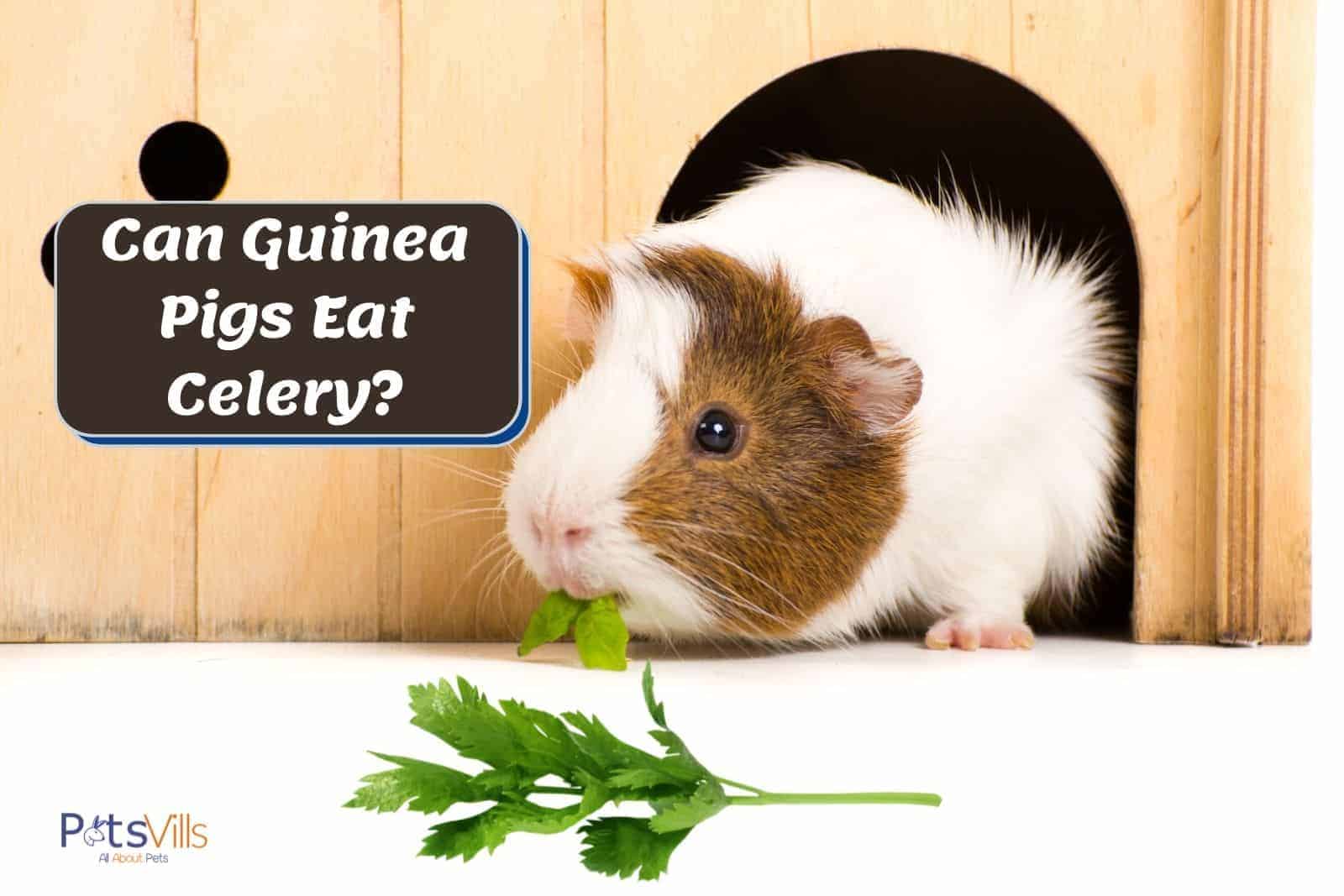Can guinea pigs eat celery?
Is it a safe food for your guinea pig?
I’ll answer this question from all angles and give you all the information you need to make an informed decision.
Guinea pig owners, continue reading to learn more!
Don’t forget to check our guide on guinea pig toxic foods too!
Table of Contents
Can Guinea Pigs Eat Celery?
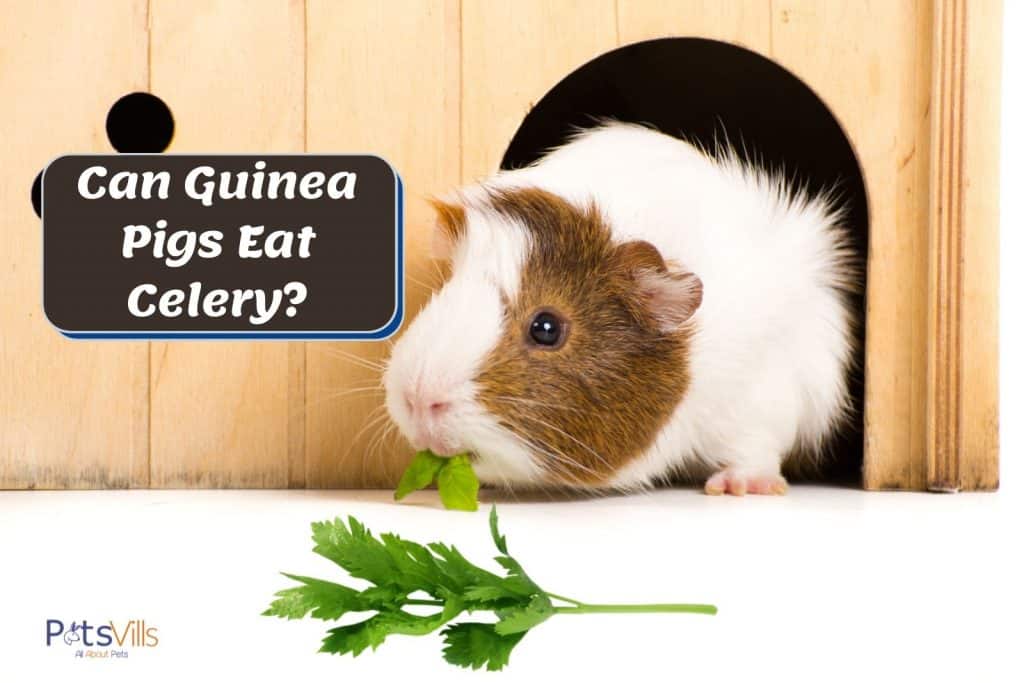
Yes, guinea pigs can eat fresh celery safely. It’s non-toxic to cavies and poses little risk of causing them immediate harm.
As with any tasty snack, though, moderation is the key. Too much of a good thing can eventually be bad. Even fruit and green vegetables!
While it’s packed full of plenty of vitamins and essential nutrients, the oxalates in celery can cause your cavy harm if eaten to excess.
Something we’ll touch on later…
Based on the above, this vegetable falls safely into the category of an occasional healthy snack for your cavy.
It should not form a significant part of her daily meals or replace pellets as the staple of a regular balanced diet.
How Much Celery is Safe?
Based on our initial findings in the “Can Guinea Pigs Eat Celery” section above, you now know that you have to limit the amount you feed to your cavy.
The oxalates in celery can cause your cavy to suffer from health issues, including diarrhea and bladder stones.
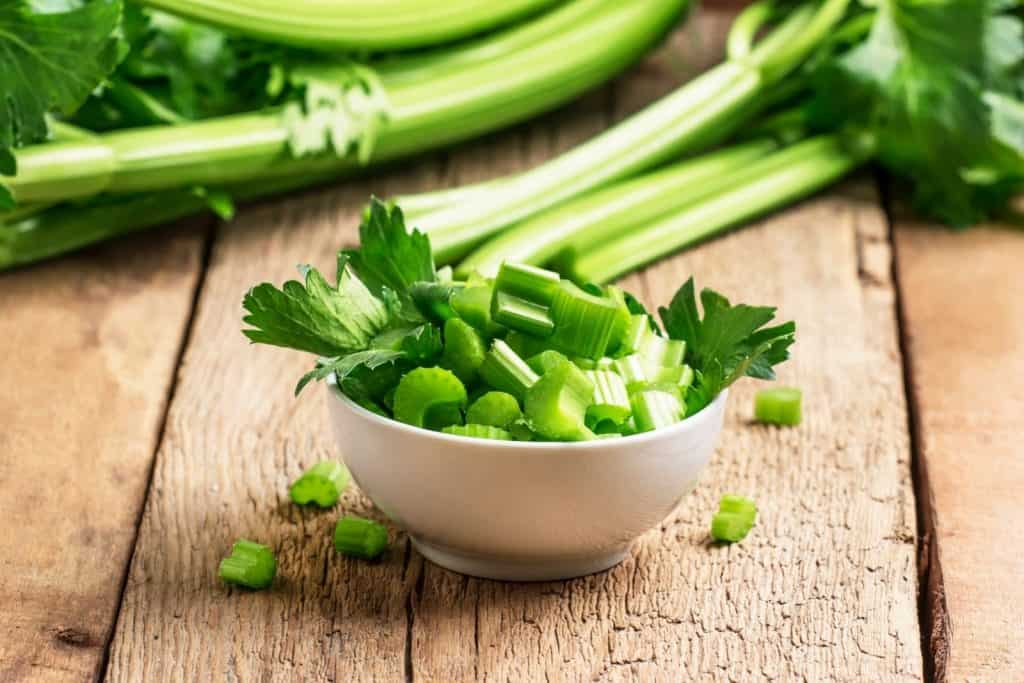
So what’s the ideal serving of celery for guinea pigs?
In an article on FeedingMyPet.com, veterinarian Dr. Edele Grey suggests, “One-sixth of a stalk is enough to provide the necessary nutrients.”
She recommends feeding this amount one or two times a week and that greater amounts of celery could become a health risk.
Can Guinea Pigs Eat Celery Leaves?
It’s a great question to ask; it shows you’re thinking and that you really care for your cavy’s health.

Celery tops and leaves are a good snack for your guinea pig to munch on, much like lettuce and other leafy greens.
The leaves have the same beneficial nutrients as the rest of the vegetable and are easier to manage than the crunchier stems.
They also contain oxalates, so too many celery tops could cause your cavy kidney or urinary problems. This is also true in humans.
More on that soon…
Can Guinea Pigs Eat Celery Stems?
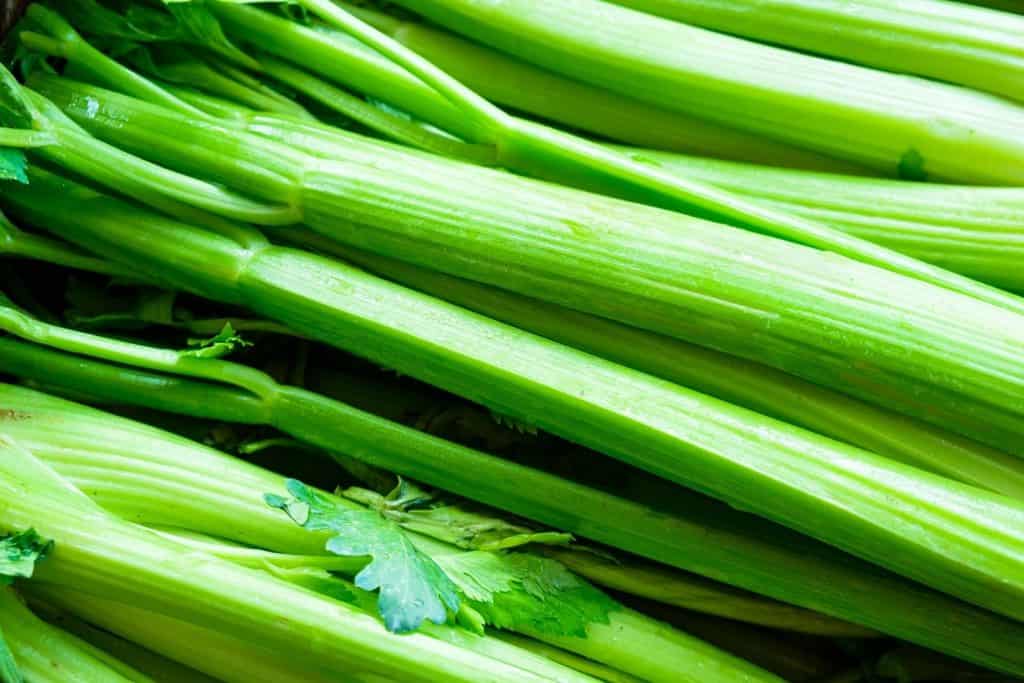
Yes, guinea pigs can safely eat the stalk of celery.
Similar to that of a carrot, the crunchy texture of celery sticks is sure to make it an enriching, tactile, crunchy treat for your cavy.
The moisture contained in the stem gives the added benefit of additional hydration.
As the celery sticks are more fibrous and tougher to chew, it’s a good idea to cut the desired portion and cut it into chunks your cavy will find more manageable.
Related: Can Guinea Pigs Eat Cucumber Skin?
How Can Celery Benefit Guinea Pigs?
Vitamin C
The USDA states celery contains 3.1 mg of vitamin C per 100 g. This makes it a great source of vitamin C for your guinea pig.
Why is this important? Just like their owners, cavies can’t produce their own vitamin C and rely on their diet to get the required amount.
The human/cavy similarities don’t end there. If your guinea pig doesn’t get enough vitamin C in her diet, she will get a condition known as scurvy.
While fashionable amongst pirates, scurvy is not something you want your furry friend to suffer with.
So, it’s useful to know that feeding this vegetable to your guinea pig is one way to boost her vitamin C intake.
Fiber
Celery is a good source of fiber, with 1.6 g of the stuff per 100 g. That’s excellent news for guinea pigs.
Why…?
Well, it helps your cavy’s digestive tract stay clear and flushes out toxins and undigested particles of food.
The fibrous structure of the stem can be a little challenging for your cavy but, in smaller chunks, can give her jaw and teeth a good workout.
Other great fiber foods for your guinea pig include hay, kale, and chicory.
READ MORE: Can Guinea Pigs Have Kale?
Water
According to the USDA, Celery is a touch over 95% water. That makes it a snack that is likely to help your guinea pig stay on top of her hydration needs.
Don’t forget to give you cavy access to lots of water at all times. Water from food alone won’t meet your pet’s daily requirements.
Such a high water content also means there are very few calories in celery. 14 kcal per 100 g, to be precise.
This means that while you still have to consider the amount of oxalic acid your cavy is ingesting, you needn’t be so concerned about calories.
Other Health Benefits
I touched on it briefly earlier, but it’s worth mentioning again. Chewing fibrous stems will help to keep your cavy’s teeth maintained.
The grinding and chewing required to break down small chunks of stem is a step in the right direction when it comes to piggy dental health.
Beta carotene & Vitamin A are also worthy of a quick mention. These complex vitamins both contribute to good eye health.
Vision isn’t exactly any cavy’s strong point, and their eyesight tends to degrade with age.
Anything you can do to help keep their eyes functioning as well as possible is always welcome.
READ MORE: Can Guinea Pigs Have Romaine Lettuce?
The Risks of Too Much Celery
Oxalates
I’ve mentioned this a few times now in answering, “Can guinea pigs eat celery?” And with good reason, oxalates can cause your cavy harm.
Also known as oxalic acids, these compounds can cause bladder stones, kidney stones, urinary problems, and kidney damage in some cavies.
This can be particularly harmful to cavies with an existing history of bladder or kidney problems.
Celery isn’t the only leafy green that contains these oxalic acids. They also appear in veggies such as spinach and chard.
Sodium
Your cavy requires sodium in her diet to help her maintain her hydration levels. Insufficient sodium can be a real issue for her.
On the other hand, too much sodium can also cause problems. Excess sodium can increase the risk of your pig suffering a heart attack or stroke.
In a forum post, one pig owner reports finding their cavy dead after eating an entire salt lick.
It’s a bit of a Goldilocks situation; you need to strike a balance to get things just right.
With a sodium content of 80 mg per 100 g of celery, sodium levels can soon rise if you’re not careful.
Hard to Chew/Digest
Even for us humans, celery can be challenging to bite and chew. Now imagine trying to tackle a stick that was bigger than you!
This is the challenge your cavy faces; a large piece of celery requires a lot of work to break apart.
If you don’t break the stem down into smaller, more manageable chunks, your piggy is likely to have a hard time.
She may try to swallow larger pieces of this dense, complex food, which will be harder for her to digest.
Don’t forget that celery leaves contain the same nutrients but are easier to chew for cavies that struggle.
Three good reasons to limit the amount of celery you feed to your guinea pig!
Celery for Guinea Pigs FAQs
Can celery kill guinea pigs?
Celery is not toxic to guinea pigs and won’t kill them directly. However, too much can cause health issues in guinea pigs like bladder stones and urinary problems. Taken to the extreme, these could be fatal for a cavy.
How much celery can I give my guinea pig?
Vets recommend a portion size of one-sixth of a stem, no more than twice a week. You should chop this into small, manageable chunks. Any more than this could lead to the development of health problems.
What part of the celery can guinea pigs eat?
Guinea pigs can eat both the celery stalks and leaves. They both have similar pros and cons in terms of health. The variety in texture between the two can make be enriching for your cavy.
In Conclusion
You asked, “Can guinea pigs eat celery?”
Through the course of this article, you learned that this vegetable is a safe, tasty treat option for your cavy.
Veterinary advice states feeding your pet a 6th of a stem one or two times per week maximizes nutritional benefits and minimizes health concerns.
Celery is a good source of vitamin C, fiber, water, and lots of nutrients that can help to improve eye health.
However, the oxalic acids in this fresh vegetable can cause complications such as bladder stones and urinary.
Follow the recommended amount, and there’s no reason to worry about feeding your guinea pig celery as part of a well-balanced diet.
Thanks for reading and taking the time to do some research before feeding your pet something new.
References
- How to Care for Your Guinea Pig 2016, RSPCA, viewed 1 June 2021, <https://www.rspcansw.org.au/blog/animal-care-information/how-to-care-for-your-guinea-pig/>.
- Oxalate In Food 2016, St. Joseph’s Healthcare, viewed 1 June 2021, <https://www.stjoes.ca/patients-visitors/patient-education/patient-education-k-o/pd-9447-oxalate-in-food.pdf>.
- Hughes, E 2021, Can Guinea Pigs Eat Celery?, FeedingMyPet, viewed 1 June 2021, <https://www.feedingmypet.com/can-guinea-pigs-eat-celery/>.
- Celery Raw 2020, U.S. Department of Agriculture, viewed 1 June 2021, <https://fdc.nal.usda.gov/fdc-app.html#/food-details/1103346/nutrients>.
- Guinea Pigs & Vitamin C Supplementation n.d., Mariposa Veterinary Wellness Center, viewed 1 June 2021, <https://www.mariposavet.com/guinea-pigs-vitamin-c-supplementation-know/>.
- Herbert, J DVM n.d., Nutrition for Guinea Pig, Centre Vétérinaire Laval, viewed 1 June 2021, <https://cvlaval.com/en/exotic-services/fact-sheet/nutrition-guinea-pig.html>.
- Eyes n.d., Guinea Lynx, viewed 1 June 2021, <http://www.guinealynx.info/eyes.html>.
- Extreme Danger of Salt Licks And Cavies 2016, The Guinea Pig Forum, viewed 1 Jue 2021, <https://www.theguineapigforum.co.uk/threads/extreme-danger-of-salt-licks-and-cavies.142650/>.
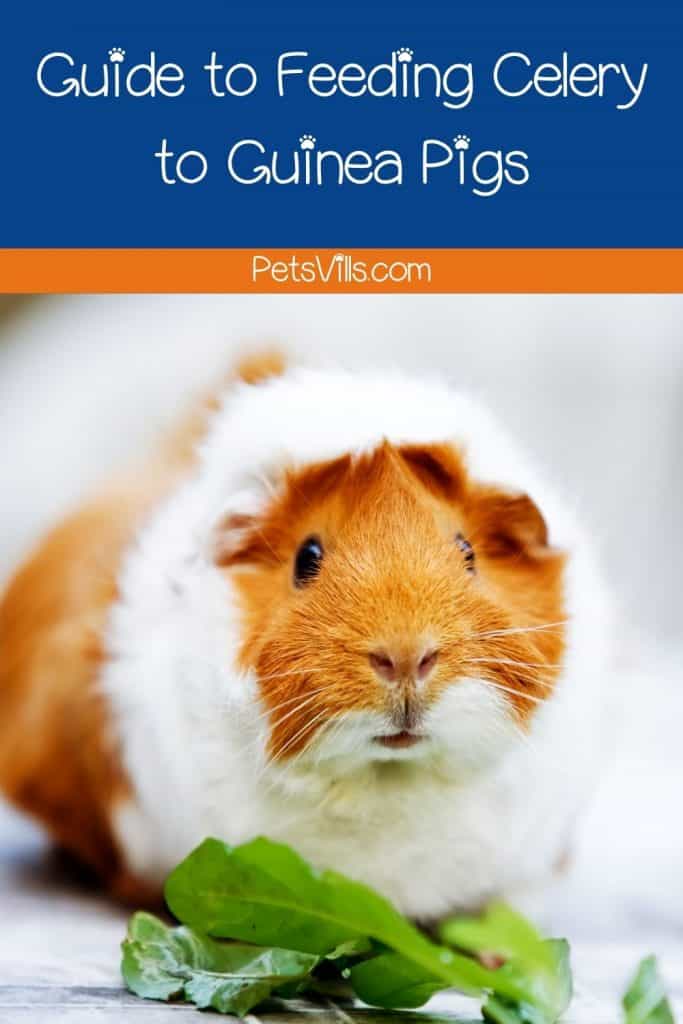
Can guinea pigs eat celery? Share your thoughts and experience below!
Barry Stingmore is a British content writer living in Fuerteventura, Spain. An animal lover at heart, he shares his home with a dog and four rescue cats and has a passion for writing about animals big and small.
Barry loves finding answers to your animal-related questions, the more research involved the better! You can rely on him to find the facts.
Find him on FACEBOOK, TWITTER AND Linkedin
Read his latest ARTICLES.
Find more about him HERE.

